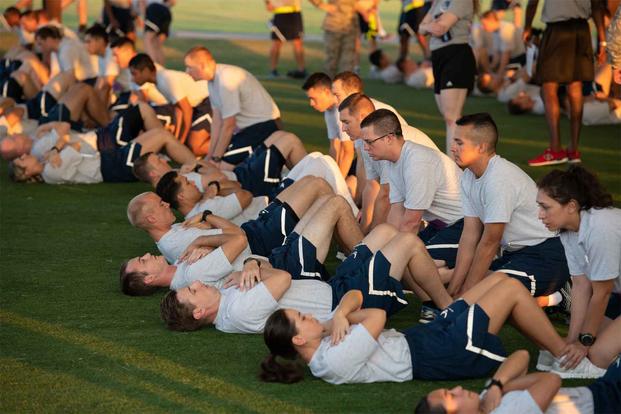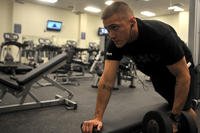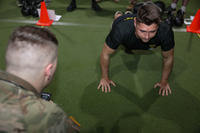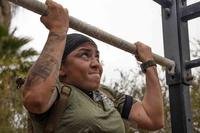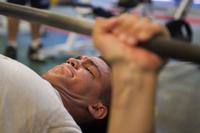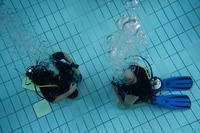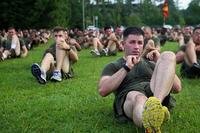This article deals with a portion of the physical fitness test (PFT) found in every branch of service. This is one element that many people either barely pass or just fail. The sit-up or curl-up is also the easiest exercise to score maximum points for, but you must practice this exercise several times a week to reach that achievement.
Here is a question from a Navy recruit getting ready for boot camp:
"I have a question about curl-ups. Can you explain the proper technique that will produce the most efficient results?"
In the military, you have to cross your arms over your chest and touch your elbows to your knees when in the "up" position, and drop your shoulder blades to the floor in the "down" position. You only can rest while in the "up" position.
Place your feet flat on the floor and raise your knees. It is best to start out with the heels of your feet about 12-18 inches from your butt.
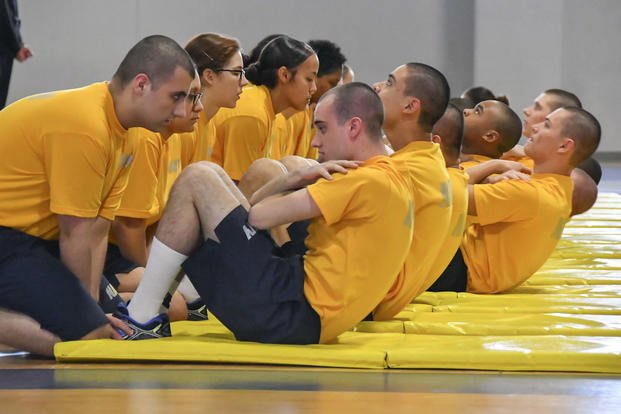
Sit-ups or Curl-ups
Lie on your back with your arms crossed over your chest, keeping your knees slightly bent. Raise your upper body off the floor by flexing your abdominal muscles. Touch your elbows to your thighs and repeat. During the PFT, someone will count and hold your feet for you.
The most important thing is to pace your sit-ups. Too many times, people start out too fast and do about 30-40 in the first 30 seconds and are not able to get 30-40 in the next 1 minute, 30 seconds of a two-minute test. If your goal is 80-100 in a two-minute period, you should pace yourself at 20-25 in 30 seconds and 40-50 in one minute.
The way I do this is to train with the clock when doing abs in my workout. Try 2-3 sets of timed sit-ups at one minute; find the pace that matches your goal score. Then try 4-5 sets of 30 seconds of timed sit-ups. Try to maintain your pace each time.
As you start to fatigue and think you cannot do any more sit-ups, slide your butt about 4-6 inches away from your feet. This will create a different angle between your stomach muscles and legs, and you should be able to crank out 5-10 more sit-ups in your last 20-30 seconds.
To conserve abdominal stamina, only exert yourself on the "up" portion of the exercise and let gravity take you down so your shoulder blades touch the floor. People often keep their abs flexed while descending and waste too much energy. This error and lack of pace are the two biggest impediments to performing well on the curl-up or sit-up test. Lacking proper training 4-5 times a week will prevent you from doing as well as you could in the physical fitness test, too.
Stew Smith is a former Navy SEAL and fitness author certified as a Strength and Conditioning Specialist (CSCS) with the National Strength and Conditioning Association. Visit his Fitness eBook store if you're looking to start a workout program to create a healthy lifestyle. Send your fitness questions to stew@stewsmith.com.
Want to Learn More About Military Life?
Whether you're thinking of joining the military, looking for fitness and basic training tips, or keeping up with military life and benefits, Military.com has you covered. Subscribe to Military.com to have military news, updates and resources delivered directly to your inbox.
